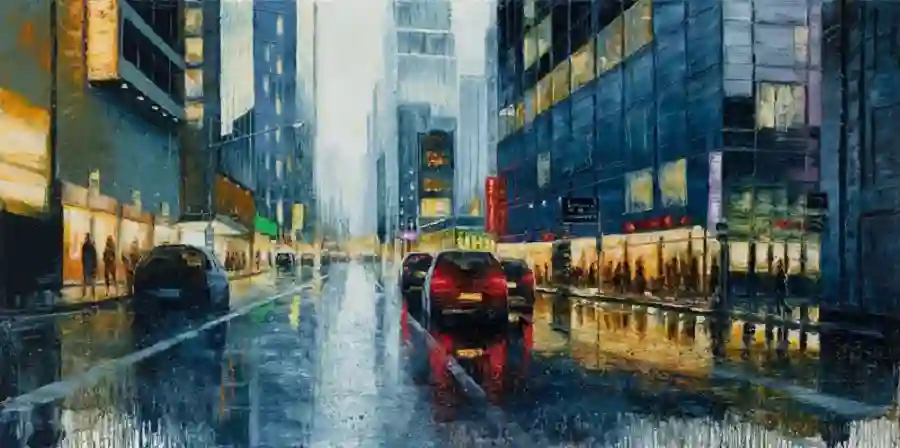
The Journey of a Stroke: Mastering Oil Painting Techniques
Oil painting is a timeless and versatile medium that has captivated artists for centuries. It offers a wide range of techniques for expressing creativity, from precise brushwork to bold palette knife strokes. In this article, we’ll embark on a journey through the world of oil painting techniques, exploring the fundamentals and nuances that artists master to create stunning artworks.
1. The Brushwork Basics:
Brushwork is at the heart of oil painting, and mastering various brush techniques is essential. Start with the basics, like understanding the types of brushes, brush care, and brushstroke fundamentals. Practice controlling the width, pressure, and direction of your brushstrokes to create a range of effects.
2. The Power of Underpainting:
Before diving into the final artwork, consider creating an underpainting. An underpainting is a monochromatic or limited-color foundation that establishes values and composition. It serves as a guide for subsequent layers and can add depth and luminosity to your painting.
3. Blending and Layering:
Blending and layering are essential techniques for achieving smooth transitions and subtle gradients in your oil paintings. Blending involves softly merging colors, while layering allows you to build depth by applying multiple transparent or semi-transparent layers of paint.
4. Impasto and Texture:
Impasto is a technique where thick layers of paint are applied to the canvas, creating three-dimensional texture. Use palette knives or brushes to sculpt and manipulate the paint. Impasto can add a tactile quality to your artwork, especially when depicting textured subjects like flowers or landscapes.
5. Glazing for Depth:
Glazing involves applying thin, transparent layers of paint over dry layers to create depth and luminosity. This technique is particularly useful for adjusting color, modifying values, and achieving a sense of atmospheric perspective. Experiment with glazing to add subtle shifts in color and mood to your paintings.
6. Scumbling for Softness:
Scumbling is a technique where a thin layer of opaque or semi-opaque paint is applied lightly over a dry layer. It can create a soft, diffused effect, ideal for achieving a dreamy or ethereal quality in your artwork. Scumbling is often used in portrait backgrounds and landscapes.
7. Sgraffito for Detail:
Sgraffito is a technique where you scratch or scrape through a layer of wet paint to reveal the layers underneath. This technique is excellent for adding fine details or creating intricate patterns. Sgraffito is commonly used in still life paintings or to depict textured surfaces like tree bark or fabric.
8. Working Wet-in-Wet:
Painting wet-in-wet involves applying fresh paint directly onto a wet base layer. This technique is ideal for creating smooth transitions and blending colors seamlessly. It’s commonly used in landscapes, seascapes, and scenes with soft transitions like sunsets.
9. The Alla Prima Approach:
The alla prima technique, also known as “direct painting,” involves completing a painting in a single session while the paint is wet. It encourages spontaneity and bold brushwork, making it popular for plein air painting and capturing the immediate essence of a subject.
10. Grisaille and Color Keying:
Grisaille is a technique where a painting is executed entirely in grayscale before adding color glazes. It’s a method for achieving tonal balance and accurate values before introducing color crewlogout. Color keying is a related technique that involves painting a preliminary color study to guide your final artwork’s palette.
11. Dry Brushing for Texture:
Dry brushing is a technique where a nearly dry brush is used to create fine lines, scratches, or textural details. It’s effective for adding highlights, fur, or fine lines in your paintings. Practice control and precision when employing this technique.
12. Patience and Perseverance:
Mastering oil painting techniques requires patience and perseverance. Don’t be discouraged by initial challenges or setbacks. Each painting you complete is an opportunity for growth and improvement. Over time, you’ll refine your skills and develop your unique style.
Conclusion:
The journey of a stroke in oil painting is a voyage of exploration and expression. As you master various techniques, you’ll discover the infinite possibilities of this medium. Brushwork, underpainting, blending, impasto, glazing, and the myriad of other techniques provide you with the tools to translate your artistic vision onto the canvas.
Embrace the journey, experiment with different techniques, and let your brushwork and palette knife strokes tell your story. Whether you aim for realism or abstraction, oil painting offers a rich and dynamic canvas for your artistic voice.
So, pick up your brushes and palette knives, prepare your canvas, and embark on the journey of a stroke, guided by your passion for oil painting and your desire to create stunning and expressive artworks.